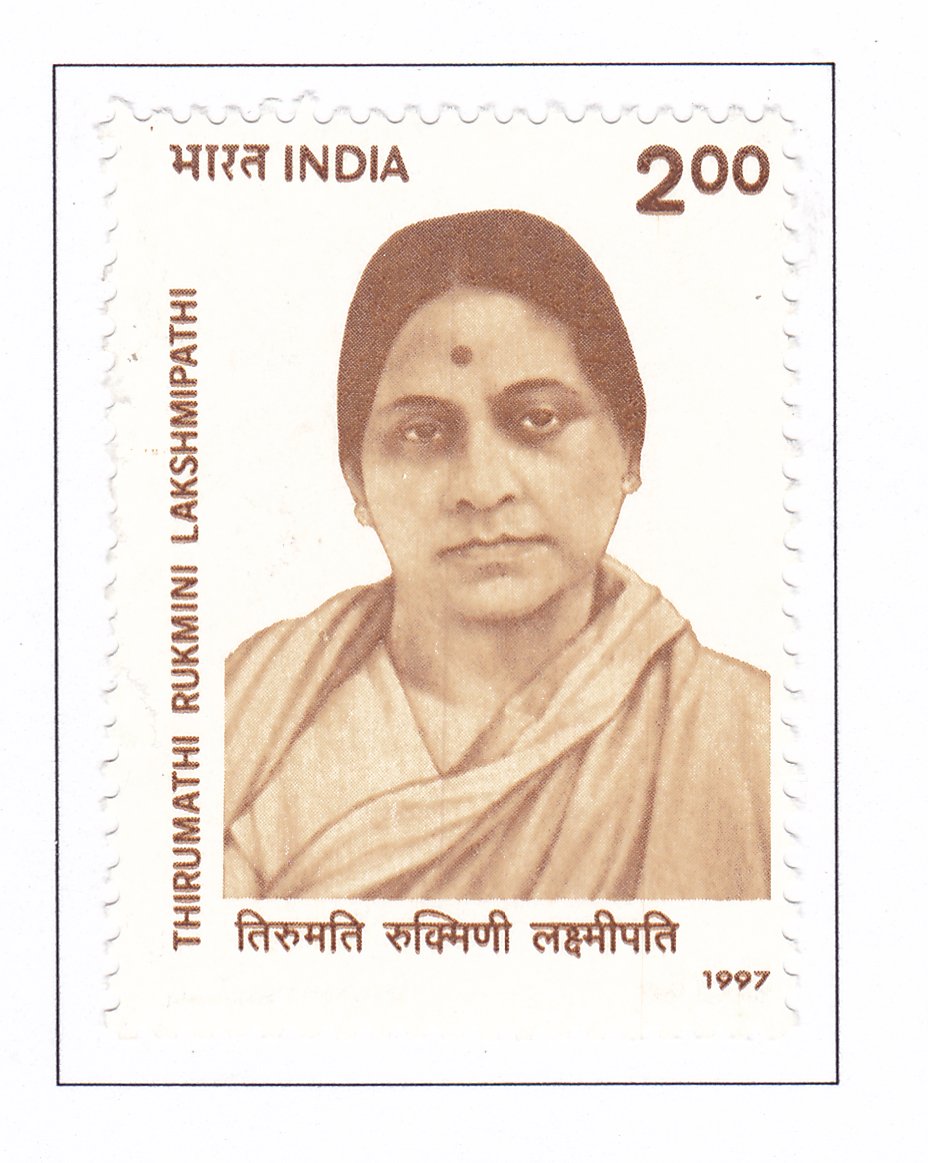Thirumathi Rukmini Lakshmipathi (1892-1951)

Technical Data
| Date of Issue | August 6, 1997 |
|---|---|
| Denomination | Rs. 2 |
| Quantity | 400,000 |
| Perforation | comb 13 x 13½ |
| Printer | Security Printing Press, Nashik |
| Watermark | No Watermark |
| Colors | Multicolor |
| Catalog Codes |
Michel IN 1556 Stamp Number IN 1612 Yvert et Tellier IN 1328 Stanley Gibbons IN 1720 |
| Themes | Commemoration | Famous people | Reformers | Women |
Table of Contents
Honoring Smt. Rukmini Lakshmipathi
Design Elements
- Subject: The stamp features a dignified portrait of Smt. Rukmini Lakshmipathi, capturing her contributions to social reform and the Indian independence movement.
- Visual Features: The design might include symbols of her work in social reform, such as educational or legal imagery, or elements representing the various movements she supported.
Cultural and Historical Significance
- Early Life and Education: Born on December 6, 1892, in a landlord’s family in Madurai, Smt. Rukmini Lakshmipathi graduated from Presidency College, Madras, before marrying Dr. Achanta Lakshmipathi, which led to her active involvement in the national movement.
- Social Reform and Activism: Influenced by leaders like Mahatma Gandhi and Sarojini Naidu, she was instrumental in social reforms, including raising the age of marriage and age of consent. Her work as Secretary of the Bharata Stri Mahamandal and President of the Youth League in Madras highlighted her commitment to women’s upliftment.
- Political Involvement: Joining the Congress Party in 1923, she was an active participant in the Salt Satyagraha in 1931 and the Civil Disobedience Movement, resulting in multiple imprisonments. She was a prominent member of the Tamil Nadu Congress Committee, serving as Vice President and later as Deputy Speaker of the Madras Legislative Assembly.
- Contributions and Achievements: She presided over the Tamil Nadu Provincial Committee in 1936, visited Japan as part of a Good Will Mission in 1938, and served as Minister for Health in 1946 under Sri T. Prakasam. Her efforts in advancing elementary and adult education, and female education, reflect her enduring legacy.
- Legacy: Smt. Rukmini Lakshmipathi continued to serve in various capacities until her death on August 6, 1951. Her contributions to education, social reform, and politics have left a lasting impact.
Usage
- Domestic and International Postage: The stamp can be used for both domestic and international mailing, celebrating the life and contributions of Smt. Rukmini Lakshmipathi.
- Philatelic Collections: It is a significant addition for collections focused on Indian history, social reform, and the independence movement.
Importance of the Commemorative Stamp
The stamp serves to:
- Honor Her Contributions: Recognize Smt. Rukmini Lakshmipathi’s dedication to social reform, education, and the Indian independence movement.
- Celebrate Social Reform: Highlight her work in advancing women’s rights and educational reforms.
- Preserve Legacy: Commemorate her influence and achievements in Indian politics and social activism.
Example of the Stamp Design
- Visual Depiction: The stamp includes a portrait of Smt. Rukmini Lakshmipathi, possibly surrounded by symbols of her key contributions, such as educational motifs or imagery related to her political activities.
Significance
The commemorative stamp issued in August 1997 pays tribute to Smt. Rukmini Lakshmipathi’s significant role in Indian history. It acknowledges her tireless efforts in social reform, education, and her active participation in the fight for independence.
